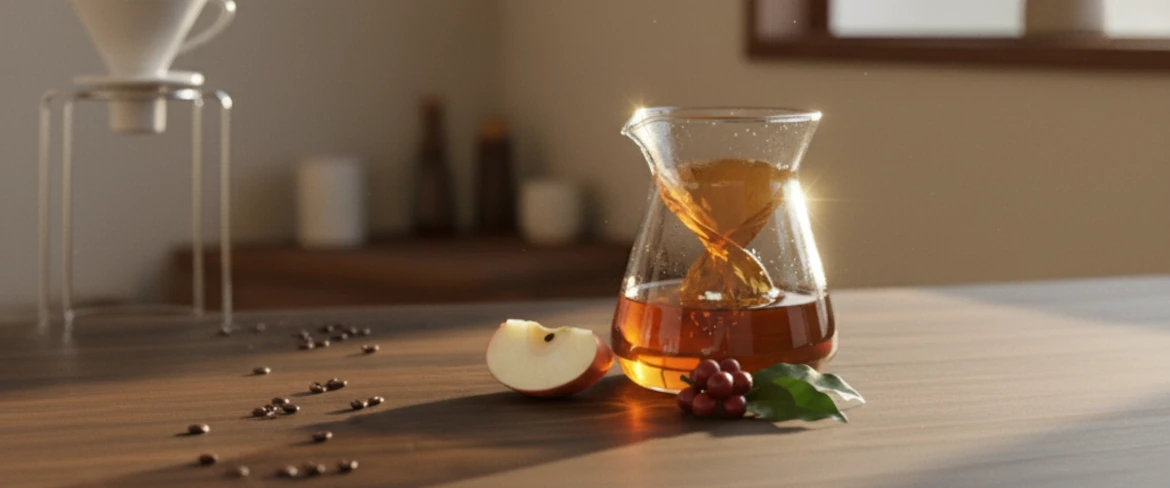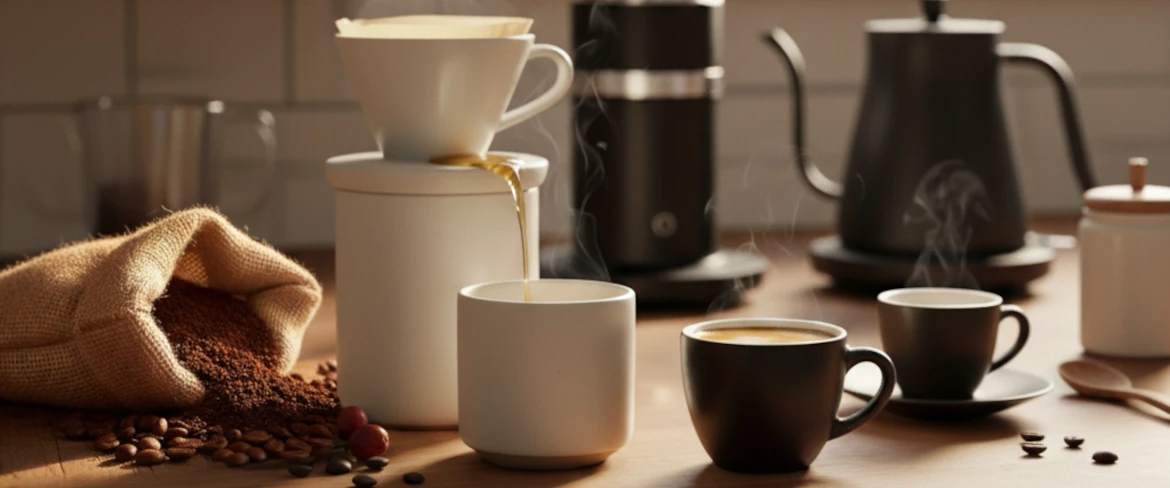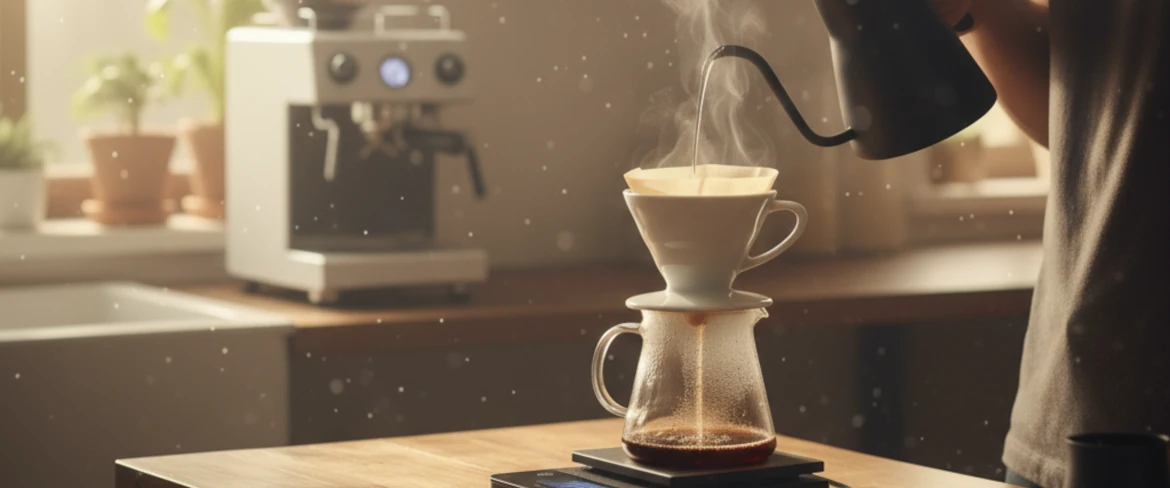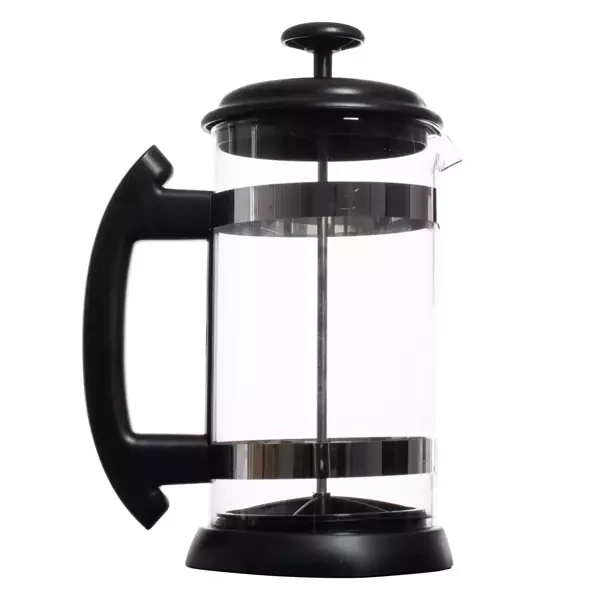Coffee acidity and bitterness – how to choose the perfect beans for your taste

Why is coffee sometimes bitter or sour? This question often comes up – especially among those who are only just starting their adventure with speciality coffee. Some people think that sour coffee from an espresso machine is a brewing error, others believe bitterness means strength. In fact, both these qualities – coffee acidity and bitterness – are completely natural elements of the flavour profile, giving your brew its character and depth.
In this article, we explain what coffee acidity really is and how it differs from an unpleasant sour taste. You will also learn why coffee sometimes turns bitter and how to choose the perfect beans – from delicate Brazilian types to fruity, expressive Kenyan coffees – so your cup always matches your taste.
Summary:
- What is coffee acidity?
- Why coffee is sour?
- Low acidity coffee beans – how to choose the right ones for your preferences?
- Bitter coffee – when is it a flaw and when a virtue?
- How to brew coffee to achieve the perfect balance of acidity and bitterness
- How to find the perfect coffee for your palate?
What is coffee acidity?
When we talk about coffee acidity, we don’t mean the unpleasant sour taste reminiscent of lemon. In the world of coffee, the term “acidity” refers to the liveliness, freshness and aromatic complexity of the brew. Thanks to this, coffee tastes more interesting – it can surprise you with notes of berries, red apple, maple syrup or juicy citrus fruit.
In contrast, sour coffee is a result of an error: grinding the beans too coarsely, using water that’s too cool, or not extracting long enough. Instead of a pleasant acidity, the drink will exhibit an intense, raw, flat sour coffee flavour. So if you wonder why coffee is sour from an espresso machine, the parameters of brewing – rather than the beans themselves – are probably to blame.
💡 Did you know? High‑quality Arabica speciality coffees are often characterised by a distinct, pleasant level of coffee acidity. These usually come from regions located high above sea level – such as Kenya, Ethiopia or Guatemala – where the beans ripen more slowly and develop exceptional flavour complexity.
How is coffee acidity labelled?
On coffee packaging you’ll often see the acidity rating shown as a scale or graph (for example, from 1 to 5). It indicates how intense the freshness and fruitiness of the brew will be. This scale is usually part of the sensory profile, where producers also present the levels of bitterness, sweetness and body. For example:
- 1–2 – low acidity coffee, usually from Brazil or India: delicate, nutty and chocolatey;
- 3 – balanced, classic in flavour – like Colombian or Nicaraguan beans;
- 4–5 – high coffee acidity, typical of East Africa: juicy, fruity, slightly wine‑like.
It’s worth noting that low acidity coffee beans do not imply lower quality – they simply represent a different style. It all depends on your preferences: if you enjoy a smooth taste without fruit notes, choose low acidity coffee. If you prefer a bright, complex profile, go for beans from Guatemala, Kenya or Colombia.
☕ How to read the information on a coffee label?
- ✔️ Acidity – indicates freshness and fruitiness;
- ✔️ Body – shows the brew’s thickness and richness;
- ✔️ Sweetness – describes the coffee’s natural sweetness;
- ✔️ Bitterness – the level of bitter coffee notes, often linked to the roasting level.
Understanding these indicators helps you choose the coffee that best suits your taste – whether a mild Brazilian cup or an apricot‑like Kenyan one.
Low acidity coffee vs. sour coffee – what’s the difference?
These two terms are often used interchangeably, but they are not the same. Low acidity coffee has a balanced, velvety flavour profile – no dominant fruity tones, yet still pleasant, subtly sweet and harmonious. In contrast, sour coffee results from a brewing mistake, not the bean’s natural character.
The sourness may be caused by:
- ❌ Under‑extraction – the water doesn’t stay in contact with the coffee long enough;
- ❌ Grinding too coarsely – a common issue with automatic espresso machines;
- ❌ Water that’s too cool – hot, but not boiling, is essential;
- ❌ Stale beans – old coffee loses its flavour balance.
If you notice a sour taste in coffee right after brewing, check your brewing parameters before blaming the beans. You might find that your cup – instead of being sour coffee from the espresso machine – becomes vibrant and well balanced.
📌 Remember: Coffee acidity is a positive quality that adds brightness to your cup. Sour coffee indicates an extraction error – such as too‑short a brew time or low water temperature. If you enjoy a mild harmony, choose low acidity coffee beans from Brazil or India.
👉 Check out our selection of coffees with varied flavour notes available in our shop.

Why coffee is sour?
Have you ever brewed a cup that, instead of pleasant freshness, surprised you with intense sourness? Sour coffee is one of the most common problems coffee lovers face. Although the causes may vary, they share a single underlying factor – an imbalance in extraction, the process by which water dissolves and draws flavour compounds from ground coffee.
If you’re wondering why coffee is sour, consider three main factors: the quality of the beans, their freshness and your brewing parameters.
📌 A sour coffee taste can result from:
- ❌ Too low a water temperature – water below 88 °C fails to extract the full range of flavours; the result is under‑brewed, sour coffee;
- ❌ Grinding too coarsely – large particles speed up the flow of water and prevent balanced extraction, leaving the cup flat and sour;
- ❌ Brewing too quickly – especially common in automatic or pour‑over machines; the shorter the contact time, the more acids and the fewer sweet notes are dissolved;
- ❌ Old or poorly stored beans – oxidised aromas produce a papery, stale sourness;
- ❌ Beans with naturally high acidity – not to everyone’s liking: Kenyan or Ethiopian coffees can feel too fruity if you prefer chocolate‑based profiles.
Remember, a sour coffee taste is not always a flaw – it can simply mean the beans were not suited to your chosen brewing method. Beans with naturally high coffee acidity, such as those from Guatemala or Ethiopia, shine in pour‑over methods, whereas for espresso it’s better to select espresso‑dedicated coffees from Brazil or India. These offer sweetness and a silky body without the excessive acidity.
In contrast, low acidity coffee has a smooth, pleasant profile with no sharp citrus notes. You’ll find plenty of such beans at Coffee Broastery – see our range of coffee beans; each is described by its level of acidity, bitterness and aroma, helping you pick the ideal taste profile.
Sour coffee from an espresso machine – what causes it?
When you get sour coffee from an espresso machine, something in the brewing process has gone wrong. Although both automatic and manual machines can produce excellent results, even a single incorrect setting can make the brew overly acidic. The most common culprits are:
- ⚙️ Incorrect grind size – too coarse and the water passes through too quickly, giving an under‑extracted, sour shot. Try grinding a bit finer until the drink gains depth and sweetness.
- 🌡️ Improper temperature – if the machine doesn’t reach around 92–94 °C, primarily acidic compounds are extracted. Regular maintenance and cleaning help with temperature stability.
- 💧 Under‑dosing – too little coffee relative to water means the water flows too fast, again causing under‑extraction. Try a 1:2 ratio (for example 18 g coffee → 36 g espresso).
- 🚿 Lack of maintenance – residues of old coffee and limescale inside the machine distort the flavour of new brews; cleaning the brew group regularly is essential.
Manual espresso machines can suffer similar issues – if your espresso tastes flat and sharply acidic, you may be tamping too lightly or letting the water flow too quickly. Also check the water quality: overly hard or chlorinated water disturbs flavour balance.
🧐 Barista’s tip: When using an automatic espresso machine, try selecting a finer grind and increasing brew strength by one level. With a manual machine, extend the extraction by 3–5 seconds. That’s often enough to transform overly bitter or sour coffee into a round, sweet espresso.
Another thing to watch – beans that are too fresh. Coffee roasted only a few days earlier can taste sharp and sour because of carbon dioxide still trapped inside. Wait 7–10 days after roasting before opening the bag.
Experiment, observe and change only one parameter at a time – it’s the easiest way to find the perfect settings for your espresso machine, and that pesky sour coffee will be gone for good.

Low acidity coffee beans – how to choose the right ones for your preferences?
Not everyone enjoys coffee that bursts with fruity freshness and high coffee acidity. For many, the dream cup is low acidity coffee – smooth, sweet and without harsh edges. Finding such beans isn’t only about taste but about understanding their origin and roasting level – the two main factors shaping a coffee’s flavour and aroma.
If you wonder how to find low acidity coffee beans, start by considering their country of origin. Different regions of the world produce completely different flavour profiles – some chocolatey and nutty, others floral and citrusy. Also pay attention to the roast level: this determines whether a coffee will taste brighter and fruitier or deeper and more chocolate‑driven.
💡 Did you know? Coffees grown at lower altitudes (for instance, in Brazil or India) naturally show lower acidity, while those cultivated higher up (such as in Kenya or Ethiopia) tend to have livelier, fruitier profiles.
Where low‑acidity coffees come from – countries and regions
Some parts of the world are famous for their smooth, well‑balanced flavour profiles, where bitterness and sweetness create harmony. If you’re looking for low acidity coffee beans, pay attention to those from South America and Asia – this is where you’ll find naturally sweet, nutty and chocolate‑rich coffees.
- Brazil – the classic origin for gentle, low‑acidity coffee. Brazilian Arabica offers notes of chocolate, toasted almonds, hazelnuts and subtle orange. Expect a sweet, milky‑chocolate finish and medium acidity. Perfect for espresso and cappuccino.
- India – Indian coffee has a warm, rounded flavour profile dominated by nuts and chocolate, balanced by a hint of lemon. The acidity is sweet‑citrusy, giving a creamy, well‑balanced cup. Excellent for pressure brewing methods.
- Sumatra (Indonesia) – this renowned island produces some of the world’s lowest‑acidity coffees. They feature a heavy body and earthy, herbal, dark‑chocolate tones. These deep‑flavoured coffees shine in moka pots and French presses.
- Nicaragua – delicate and creamy, with notes of hazelnut, grapefruit and black tea. Despite the hint of fruit, the brew remains smooth and round – perfect for anyone seeking balance and restraint.
- Colombia – Colombian beans are known for their harmony: a combination of chocolate, caramel and red‑currant sweetness results in a cup with medium coffee acidity. A refined compromise between lightness and intensity.
📌 In short: If you prefer chocolate‑nut sweetness and a mellow profile, go for low acidity coffee from Brazil, India or Nicaragua. For a touch more complexity, reach for Colombian beans. If you favour depth and earthiness, Sumatra from Indonesia is your best choice.
Roast level and coffee acidity – how does it influence flavour?
Besides origin, the roast level significantly affects how the brew tastes. It determines whether the cup is fruity or chocolatey. The darker the roast, the lower the perceived acidity and the more pronounced the cocoa, caramel and bitter coffee notes.
| Roast level | Flavour characteristics | Acidity level |
|---|---|---|
| Light roast | Fruity, citrus and floral notes. Best suited to alternative methods (drip, Chemex, Aeropress). | High |
| Medium roast | Balanced between sweetness and coffee acidity. Ideal for espresso machines or moka pots. | Medium |
| Dark roast | Deep flavours of cocoa, nuts and spices. Lower acidity, heightened bitterness and a full body. | Low |
If you’re seeking espresso with a creamy texture and gentle bitterness, choose medium or dark‑roasted Coffee Broastery coffee beans. For alternative methods like drip or Aeropress, lighter roasts highlight natural coffee acidity and bring refreshing brightness to your brew.
Bitter coffee – how to tell when it’s a flaw and when a virtue?
Bitter coffee – to some it’s a symbol of strength and intensity, while for others it signals something gone wrong. In reality, bitterness in coffee is not bad in itself. It’s a natural part of the flavour balance that, just like coffee acidity, can be pleasant if kept in harmony. Problems start when bitterness overpowers all the other flavours and mutes their complexity.
In speciality coffees, bitterness appears subtly – as gentle undertones of dark chocolate, cocoa or nuts. This kind of bitterness enriches the cup and adds depth. On the other hand, a harsh, ashy or burnt bitterness points to either too dark a roast or brewing errors such as excessively high water temperature or overly fine grinding.
- ❌ Over‑roasting – causes sugars to caramelise excessively, leading to burnt flavours that dominate the cup.
- ❌ Water that’s too hot – extracts excessive bitter compounds (mainly lignins and tannins) and strips the drink of sweetness.
- ❌ Grinding too fine – keeps water in contact with coffee for too long, leaching out extra bitterness and heaviness.
- ❌ Over‑extraction – leaves a distinct ashy or drying aftertaste.
It’s worth noting that bitter coffee from an automatic espresso machine often doesn’t result from poor‑quality beans but from over‑roasting or over‑brewing. If your espresso tastes sharp and lacks sweetness, lower the water temperature to around 92 °C and shorten the extraction time slightly – the improvement may surprise you.
💡 Good to know: Bitterness is to coffee what salt is to food – when used moderately, it enhances flavour; in excess, it spoils it. In speciality coffee, true pleasure lies in the balance between sweetness, coffee acidity and gentle bitterness.
How to balance bitterness and acidity in coffee to achieve the perfect aroma?
The ideal cup is one where acidity, bitterness and sweetness coexist in harmony. Achieving this balance is both craft and science – you only need to follow a few simple rules to obtain café‑quality results at home.
⚖️ How to reach the perfect balance between bitterness and acidity
- ☕ Match roast level to brewing method – light roasts highlight coffee acidity (ideal for drip or Chemex), whereas medium or dark roasts emphasise sweetness and pleasant bitterness (good for espresso or moka pot).
- 🌡️ Control water temperature – too hot (>95 °C) intensifies bitterness; too cool (<88 °C) accentuates sourness. The sweet spot is around 92–94 °C.
- ⏱️ Experiment with extraction time – shorter for more acidity, longer for deeper bitterness. Find your personal sweet spot.
- ⚙️ Adjust the grind – too fine = bitterness; too coarse = sourness. A medium grind is best for moka pots; grinding too fine is the most common reason for bitter coffee from a moka pot.
- 🌱 Choose origins thoughtfully – South American coffees (Brazil, Colombia) bring soft bitterness and chocolate notes, while African ones (Ethiopia, Kenya) offer higher coffee acidity and fruity brightness.
Remember that balanced bitterness doesn’t mean the absence of it. Gentle, velvety bitterness gives the brew body, depth and a lingering finish, whereas excessive sourness makes coffee taste sharp and thin.

How to brew coffee to achieve the perfect balance of acidity and bitterness
Even the finest beans won’t reach their potential if brewed incorrectly. That’s why brewing parameters – water temperature, grind size, extraction time and coffee‑to‑water ratio – play a crucial role in taste. These factors decide whether your cup will be balanced or lean too far towards sourness or bitterness.
By mastering these variables, you can coax out sweetness, creaminess and subtle bitterness while maintaining pleasant coffee acidity. A small misstep, however, can leave you with an overwhelming sourness or astringent bitterness.
If you’d like to understand in more depth how roasting affects flavour, read this article on our blog: 👉 “Light, medium or dark? How the roast profile influences the taste and aroma of coffee” – it includes practical examples and tips tailored to different brewing methods.
📌 Key factors affecting flavour balance
- 🌡️ Water temperature – too low (below 88 °C) won’t extract sweetness and results in sour coffee; too high (over 95 °C) intensifies bitterness.
- ⚖️ Coffee‑to‑water ratio – a general rule is 1:15–1:18 (e.g. 18 g coffee to 270 ml water), adjusted to your method and preference.
- ⏱️ Extraction time – shorter equals more acidity; longer yields stronger bitterness. Experiment until you find your equilibrium.
- 🌀 Even saturation – ensure water flows evenly through the grounds. Uneven extraction always leads to unwanted harshness.
Once you understand how these parameters interact, you can deliberately “steer” the flavour – bringing out more sweetness, softening bitterness or toning down excess acidity. The craft of brewing lies in subtle awareness and small adjustments.
Temperature, grind and ratio – their influence on sour coffee
Excess acidity in coffee often stems from the wrong combination of these three factors: water temperature, grind size and brew ratio. Grasping their relationships is the key to creating a cup that’s full‑bodied, sweet and perfectly balanced.
- Temperature – below 88 °C produces sour coffee: watery and under‑extracted. For most methods, 92–94 °C is ideal. With highly acidic beans, try a slightly higher temperature to mellow the flavour.
- Grind – if your coffee tastes too sour, it’s likely ground too coarse. A finer grind allows better extraction of sweetness and creaminess. You can learn more from our blog post 👉 “Grinding coffee – why freshly ground beans change the flavour”.
- Ratio – too little coffee for the amount of water = excess acidity and lack of body; too much = overly bitter coffee. For espresso, stick to 1:2 (18 g coffee → 36 g shot); for filter brews, about 1:16 works well.
When these three elements are in tune, your coffee will shine with harmony: acidity bright yet pleasant, bitterness gentle, sweetness clear. That’s when the beans reveal their full character.

How to find the perfect coffee for your palate
After reading this article, you already know that the taste of coffee is a fascinating interplay between acidity, sweetness and bitterness. There’s no such thing as one “best” coffee – it all depends on which flavour notes appeal most to your senses. For some, perfection means a low acidity coffee with hints of nuts and milk chocolate; for others, a juicy, fruity Kenyan arabica with bright citrus refreshment.
The key to discovering your favourite flavour profile is experimentation. Adjust one brewing variable at a time – temperature, time, ratio or grind size – and observe how each small change alters the taste in your cup. Try coffees from different regions too: Brazilian arabicas are creamy and sweet, Colombian ones balanced and complex, while Ethiopian beans are floral with a subtle citrus tang.
💡 Final tips:
- ➡️ Change only one variable at a time – you’ll quickly see what really shapes flavour.
- ➡️ Compare beans from various regions – those from Africa, South America and Asia differ dramatically.
- ➡️ Remember your brewing method (espresso, moka pot, pour‑over) highlights distinct notes even from the same coffee.
- ➡️ Pay attention to your water – it makes up 98 % of the coffee. Good‑quality water can transform your results!
Don’t be afraid to experiment. The world of speciality coffee is full of delightful nuances and endless possibilities. Your perfect coffee is the one that brings you pleasure – whether it leans more towards bitterness or coffee acidity. With time, you will learn to recognise what you truly love – and coffee will become more than a drink: it will be a daily ritual of flavour and aroma.
Find your favourite coffee, brew with passion and enjoy every sip – because a great coffee always begins with you!
FAQ – Frequently Asked Questions about Coffee Acidity
1. Why is my coffee sour?
A sour coffee taste can have several causes: water that’s too cool (below 88 °C), overly coarse grind, too short an extraction or stale beans. If you use an espresso machine, check its cleanliness too – old coffee residues and limescale can spoil the flavour of your brew. For more insight, read our section on why coffee is sour.
2. Which coffee should I buy if I don’t like sour flavours?
Choose low acidity coffee with a mellow, sweet profile full of chocolate, nut and caramel notes. Coffees from Brazil or India are excellent choices. For a creamier, well‑balanced espresso, opt for medium‑ or dark‑roasted beans – their coffee acidity is lower, and the bitterness pleasantly sweet.
3. How can I recognise good coffee acidity on the label?
Coffee producers often include a sensory profile on the packaging – usually a chart or a 1–5 scale. The higher the number, the greater the freshness and fruitiness. When choosing:
- 1–2 – mild, low‑acidity coffee (nutty, chocolate‑based);
- 3 – balanced and slightly bright, ideal for daily espresso;
- 4–5 – high‑acidity beans, typically African, perfect for pour‑over brewing.
At Coffee Broastery you’ll find detailed information on acidity and flavour notes, so selecting your ideal profile becomes easy.
4. Is coffee acidity a defect?
No – coffee acidity is a natural and desirable trait. It’s what gives a brew its brightness and vividness. Good acidity feels like the pleasant taste of red apple, citrus or berries. A flaw appears only when coffee becomes overly sour – a result of brewing mistakes such as low temperature, coarse grinding or under‑extraction.
5. How do I prepare coffee with balanced acidity and bitterness?
To achieve harmony, focus on three factors: temperature, grind and ratio. Use water at 92–94 °C, choose a medium grind (too coarse = sour coffee, too fine = bitter coffee) and keep the ratio around 1:16 for filter methods or 1:2 for espresso. For more detailed guidance, see our section on brewing the perfect balance of acidity and bitterness.
Recommended

Hand coffee grinder

French Press 1000ml

Coffee Broastery - whole bean coffee Brazil Guaxupe Premium 400g

